Tesla held its long-awaited Battery Day event on September 22. And in the event, the company announced several breakthroughs. Most notable of which are, a 56 percent reduction in cost per kilowatt-hour, and a 54 percent increase in range. These numbers have exceeded even our wildest expectation
Let’s first take a look at the battery manufacturing advancements which made it possible. We will cover Tesla’s cell chemistry and sustainable mining breakthroughs in a subsequent article.
What is a battery?
A battery, when we break it down to its most fundamental constituents, is made up of just 6 parts. These are the cylinder, anode, cathode, tab, separator, and the charge carrier (which in this case is lithium).

The cylinder contains everything inside it. The anode holds lithium during charging. The cathode holds the lithium when the battery is discharging. The separator lies between the 2 and makes sure they don’t come in contact. The tab connects at the ends of the anode and cathode and facilitates the movement of electrons bypassing the separator. And the lithium moves between the two and facilitates charge and discharge. So let’s take a look at what improvements Tesla implemented to each of these components to achieve a breakthrough.
A Bigger Battery and Tabless Design
A bigger battery just by its sheer size costs less and gives a higher energy density. The reason for this is, when the batteries are small the more cells we need to power a vehicle. That then adds to the manufacturing process and increases the none active parts of the cell and battery pack.
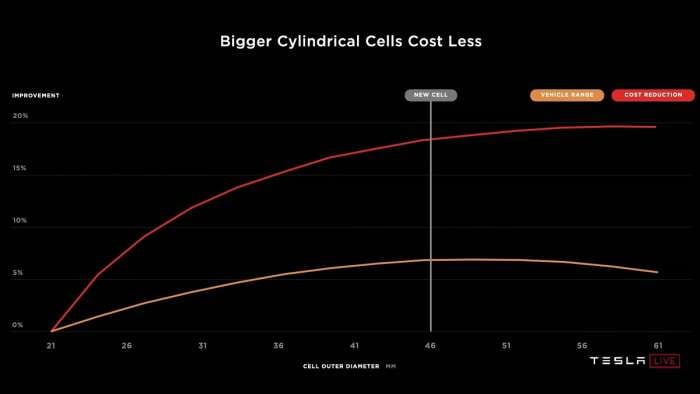
So why didn’t Tesla make the batteries bigger from the start? The problem lies in the tabs. Charge can’t directly move from anode to cathode through the separator. As a result, electrons first have to move along the longitudinal axis of the anode before they can travel to the cathode. And the tab is needed to facilitate this connection above the separator. This increases the distance an electron has to travel between the anode and cathode. As a result, there will be an increase in resistance which causes heat buildup during fast charging.
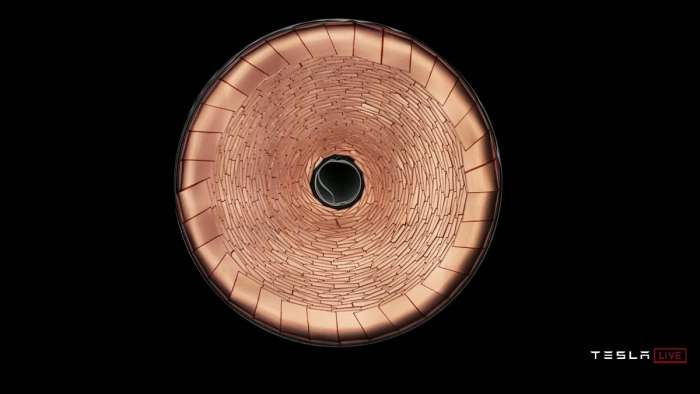
Here is where the first breakthrough comes in. A tabless design. Tesla was able to find a way for charge to pass through tiny laser-etched holes in the foil eliminating the need for tabs. This massively decreases the distance the electron has to cover. From 250 millimeters down to 50 millimeters. This Improves thermal performance, energy density, and simplifies the manufacturing process.
Because of this, Tesla was able to increase the size of the cells from the current 21millimeter by 70 millimeters to 46 millimeters by 80 millimeters. This increase in battery size together with the tabless design alone was able to increase the energy density by 14 percent and decrease the cost per KWh by 16 percent.
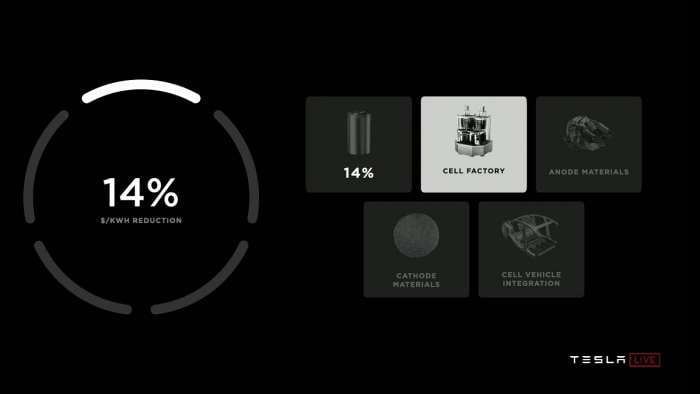
Steps In The Cell Factory
CEO Elon Musk and Drew Baglino, who is VP of powertrain and energy engineering, broke down the manufacturing process of a battery cell into 4 parts. 1) Electrode process, in this step the active materials are coated onto foils and are formed into films. 2) Jelly roll formation, here the films are wound into their final cylindrical shape. 3) Cell assembly, here the jelly roll is put in a can, sealed and filled with electrolyte, and 4) Formation, this is the final step and here batteries are charged and discharged to check for quality.
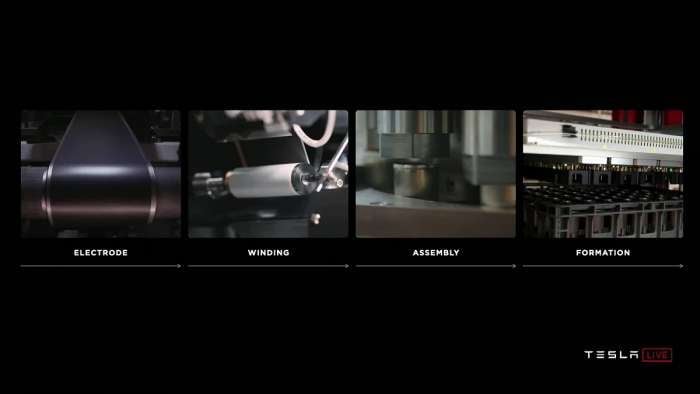
All four steps were targeted for improvement by the engineering team. So let’s see what breakthroughs Tesla was able to achieve in each of the steps
Moving From Wet To Dry Electrode Coating
Wet electrode coating is the current method used to make all cylindrical cells. In this process, the powder which makes up the electrode has to be first mixed with water or other solvents. The resulting slurry then gets coated onto a foil.
But, before the electrode film can be wound and formed into a cell the added solvents must first be removed. And this step necessitates the use of huge drying ovens. These ovens are tens of meters long and increase the factory footprint, energy consumption, and process time.
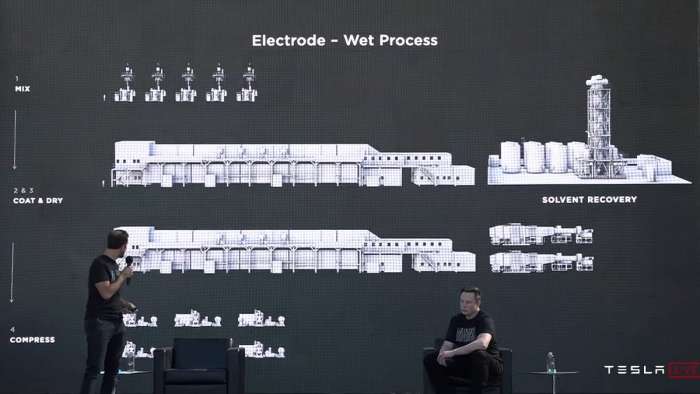
The way Tesla has been able to solve this problem is by using dry electrode coating. This means going directly from powder to film. This technique removes the entire step of adding and removing solvents. This has enabled Tesla to achieve a 10X reduction in footprint. A 10X reduction in energy consumption, and a massive reduction in investment.
Faster Jelly Roll Formation
One additional advantage of moving to a tabless cell is, Tesla can wound the electrode films at higher speed without having to stop and start the process. This increases output and simplifies production.
Faster Assembly Of Cells
The key to a high performing assembly line is accomplishing processes in continuous motion. No start and stop. And for this Tesla took inspiration from the bottling and paper industries. When designed the machine that builds the machine, Tesla sought to achieve this step without the process ever having to stop. This increases parts/minute on all of the tools enabling 20GWh of cells per production line. This is a 7X increase in production line output.
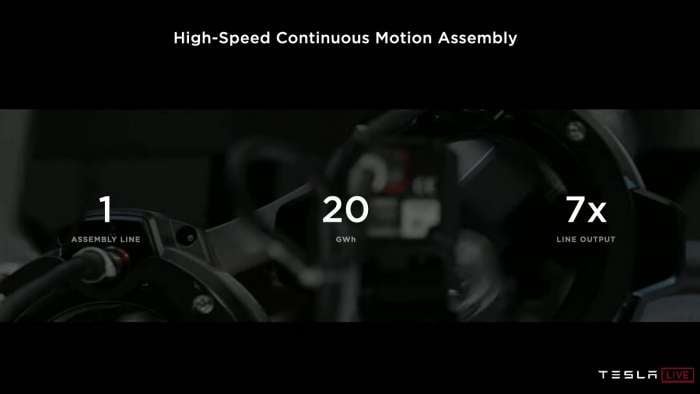
An interesting way Elon Musk looked at this was to break a factory down into cubic meter sections and see what percentage of the factory is actually doing work. Musk believes most factories including Tesla’s Fremont plant have 2 or 3% volumetric efficiency. He thinks it is possible to achieve 10X efficiency in the plants building the new cells. Meaning the factory can be 10X smaller.
Formation
In this step, new battery cells are charged and discharged for the first time to verify their quality. The way this step used to be done was, each cell gets charged and discharged on its own. But Tesla was able to leverage its powertrain design to enable the cells to undergo this process as a group. This enabled an 86 percent reduction in formation investment 75 percent reduction in the factory footprint.
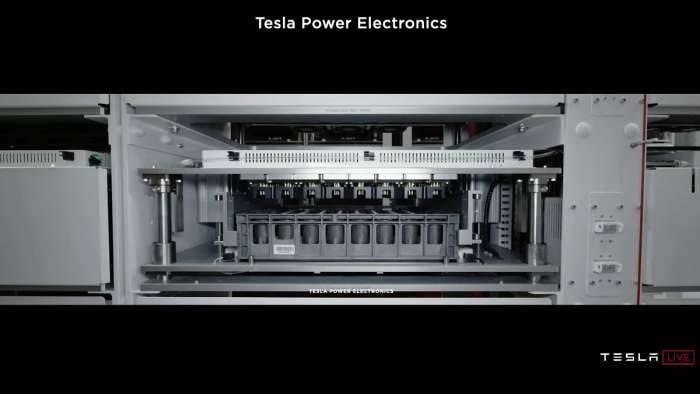
All this adds up to a 75 percent reduction in investment per GWh and enables Tesla to produce 1Terrawatt hour in less space than it will take to get to 150GWh in its Nevada Gigafactory. The savings on all 4 steps of cell manufacturing give an additional 18 percent reduction of dollar per kilowatt-hour at the battery pack level.

So when we put them all together, the bigger battery, the tabless design, and the simplified manufacturing processes all add up to a 32 percent cost reduction and a 16 percent increase in range. And what is surprising is these numbers were achieved without even taking into account other improvements in cell chemistry, mining, and vehicle integration. We will cover those topics in a follow-up article.
Tinsae Aregay has been following Tesla and The evolution of the EV space on a daily basis for several years. He covers everything about Tesla from the cars to Elon Musk, the energy business, and autonomy. Follow Tinsae on Twitter at @TinsaeAregay for daily Tesla news.













Comments
Hi Tinsae
Permalink
Hi Tinsae
Thanks for the great summary and implications behind!
Can you be more specific on how Tesla can achieve 86% reduction in investment and 75% in floor space for Formation process? You mentioned their leverage on powertrain design that enables group-based formation process vs. individual cell but I'm not clear on this concept. This means processing time is signficantly reduced too. Your insight will be much appreciated!!
Thank you! Much appreciated,
Permalink
Thank you! Much appreciated, and from what I understood from the video every cell used to be tested individually requiring a lot of duplicate instruments now they can be checked in batches. Plus the size and energy density of the new batteries is higher, meaning the same equipment can Test more kwh of batteries